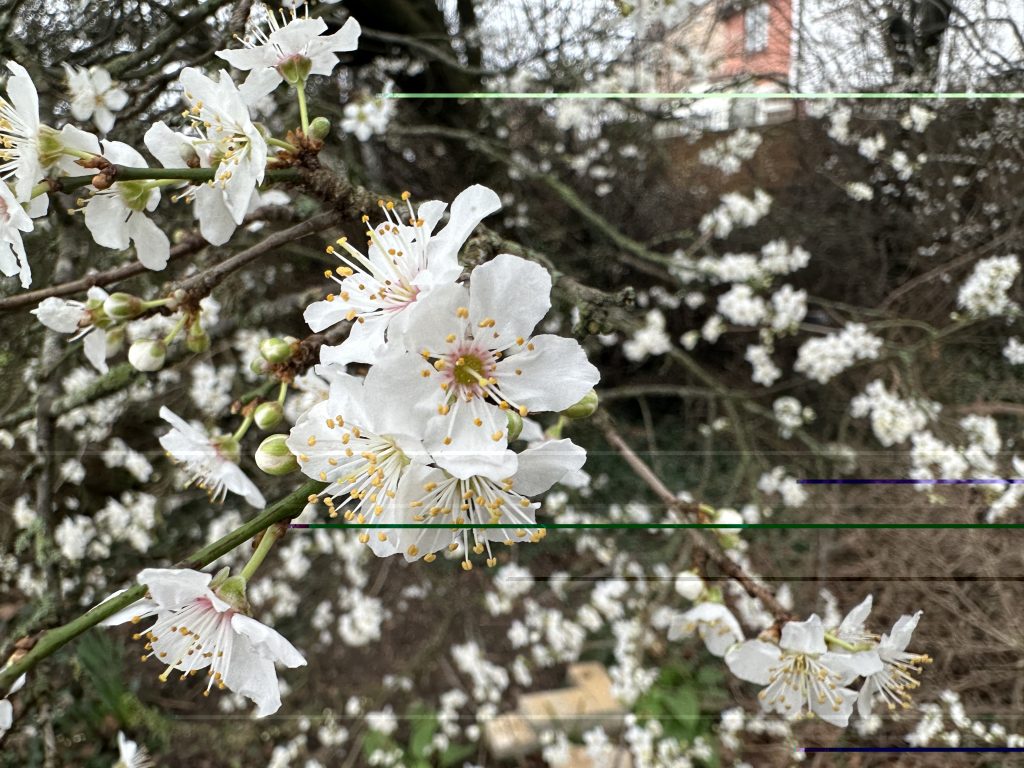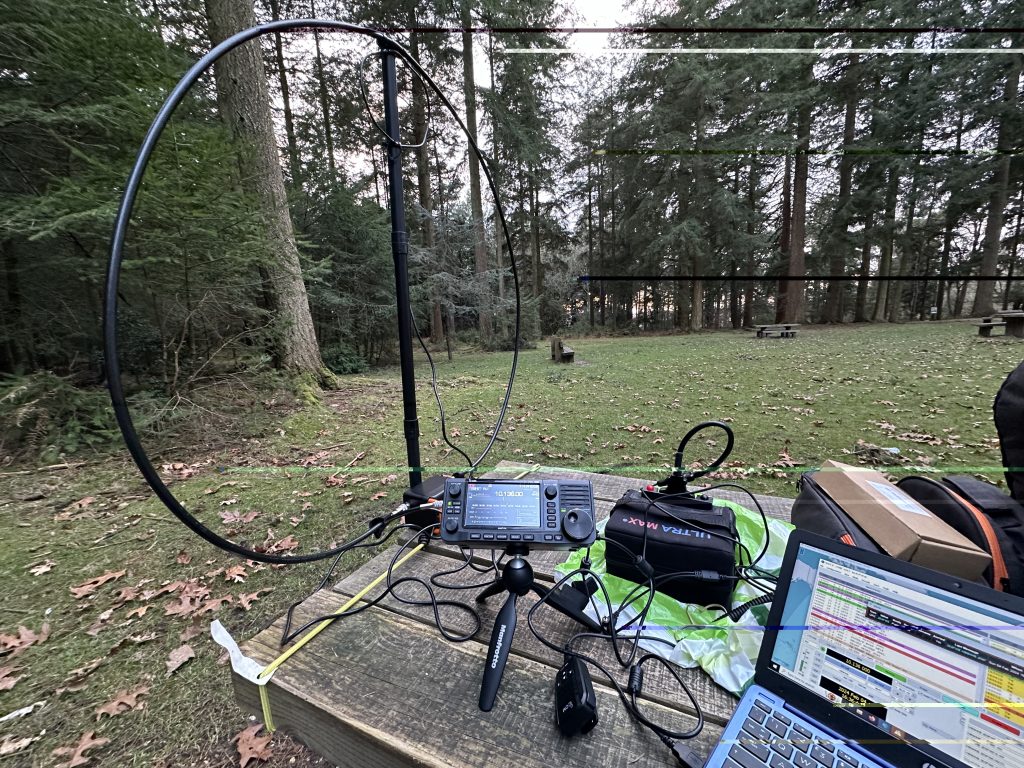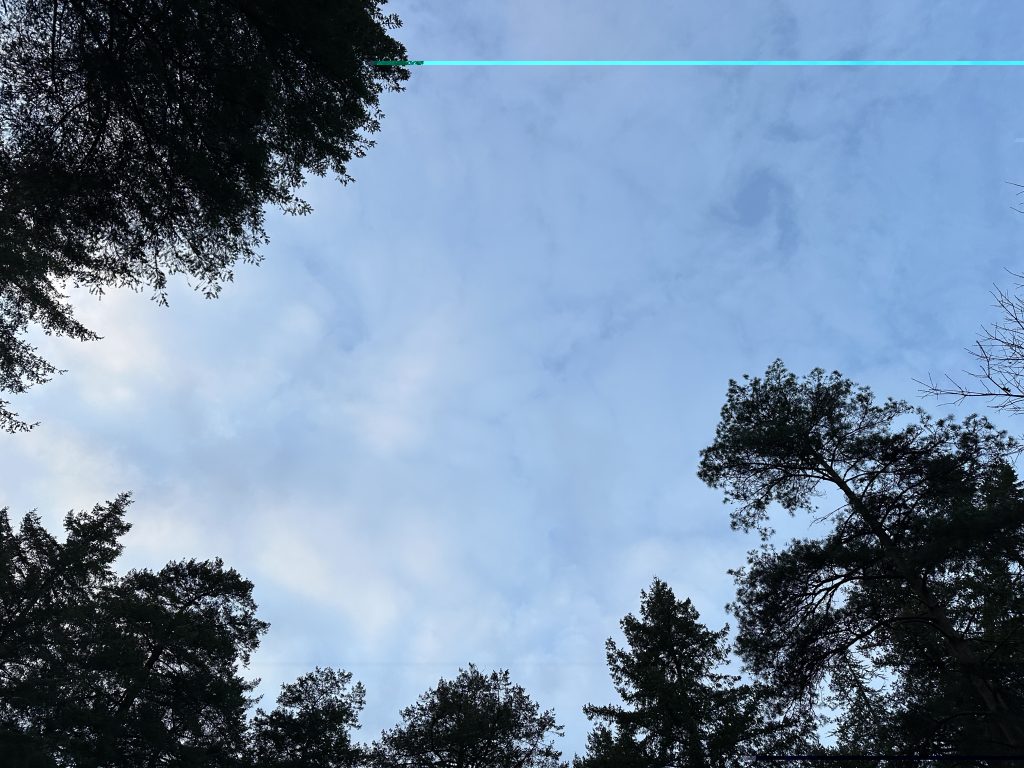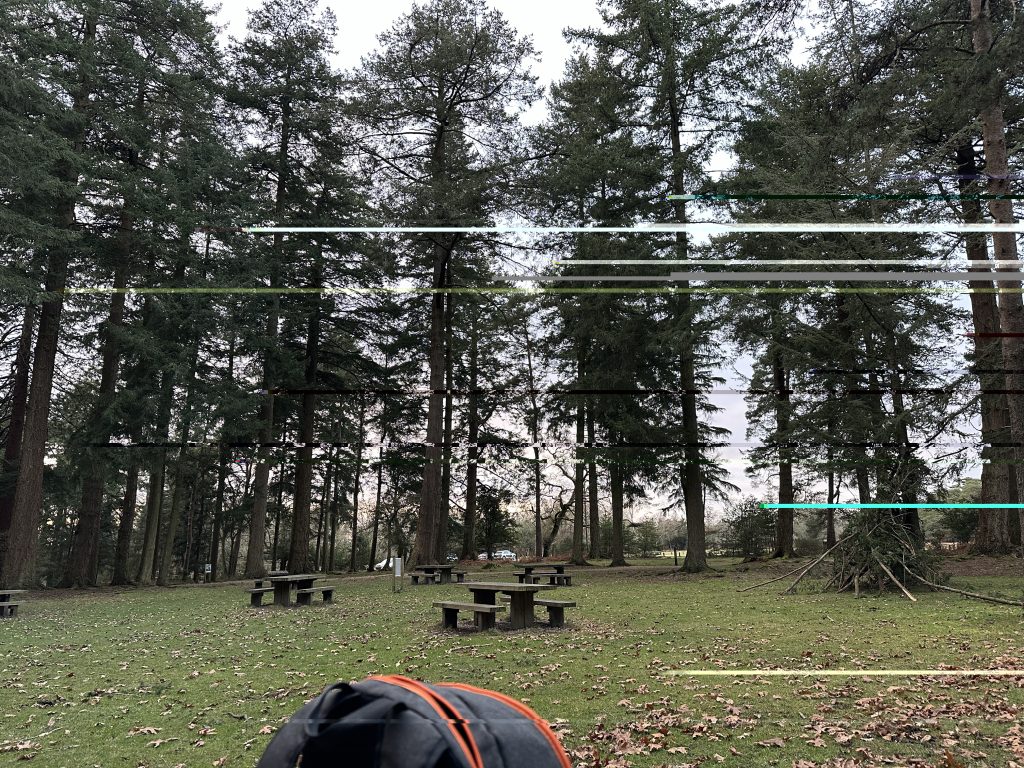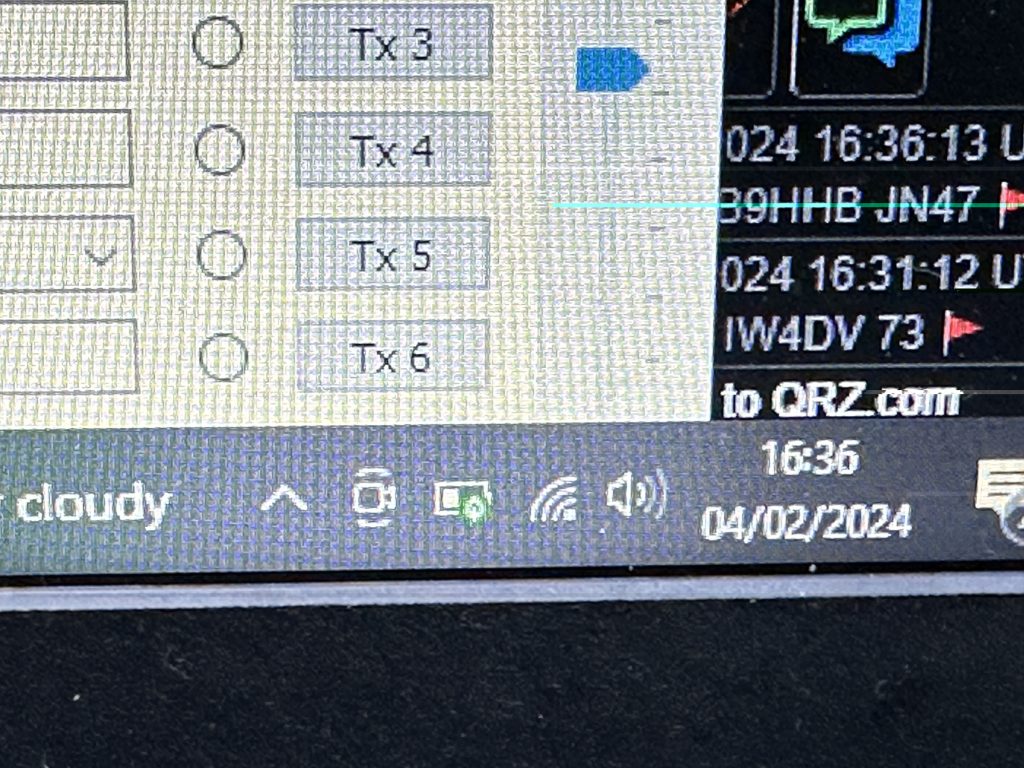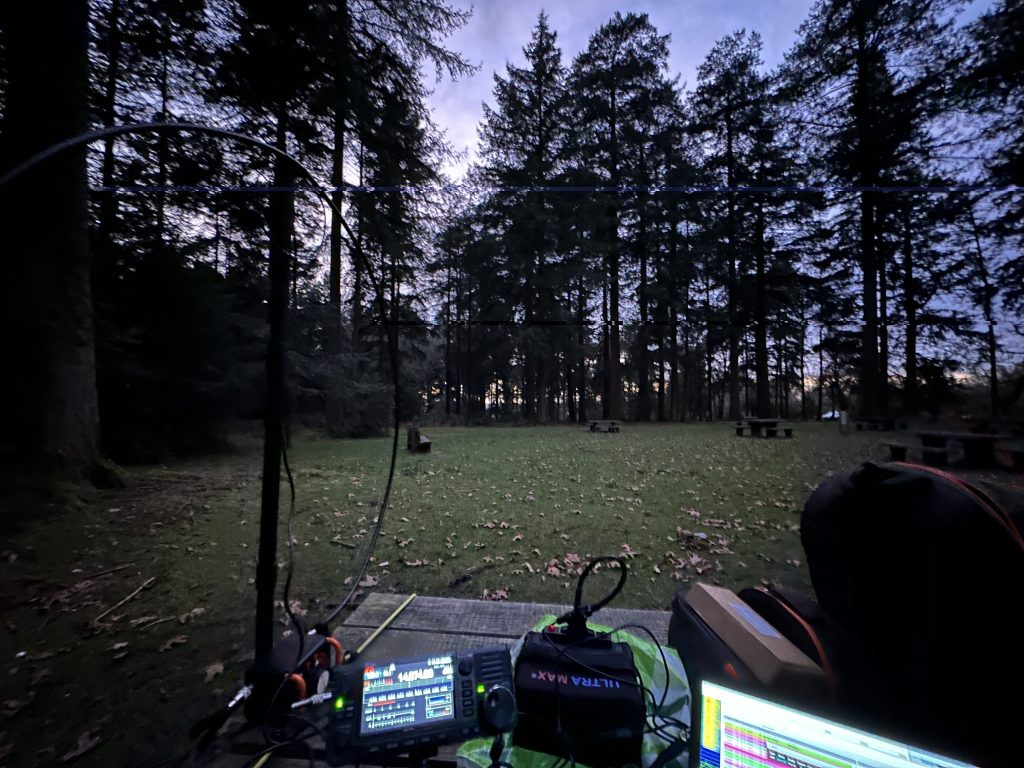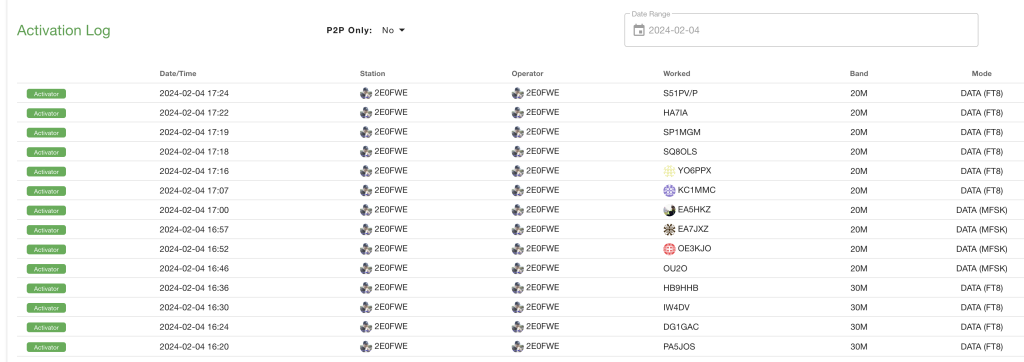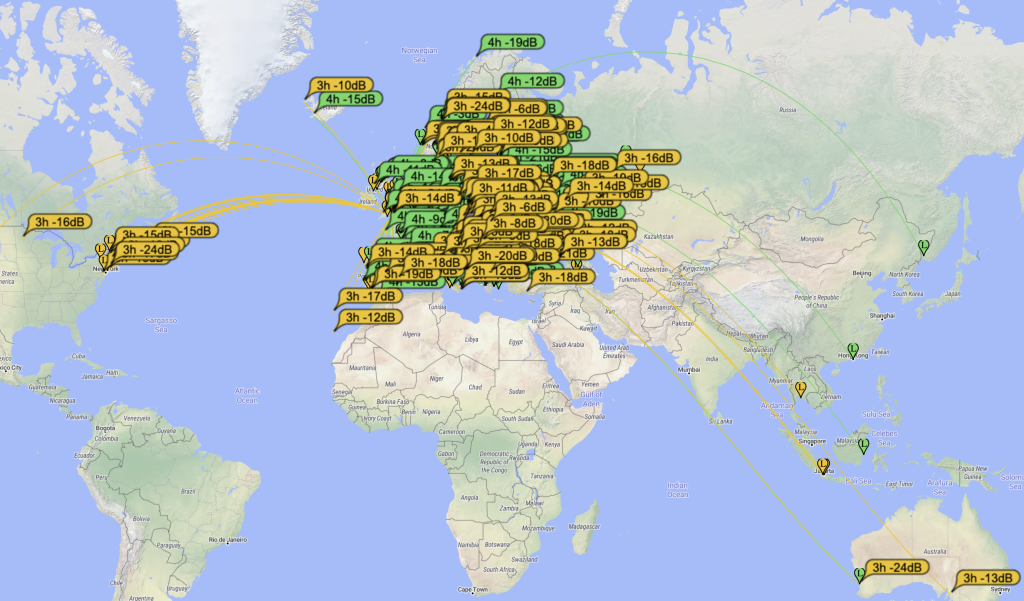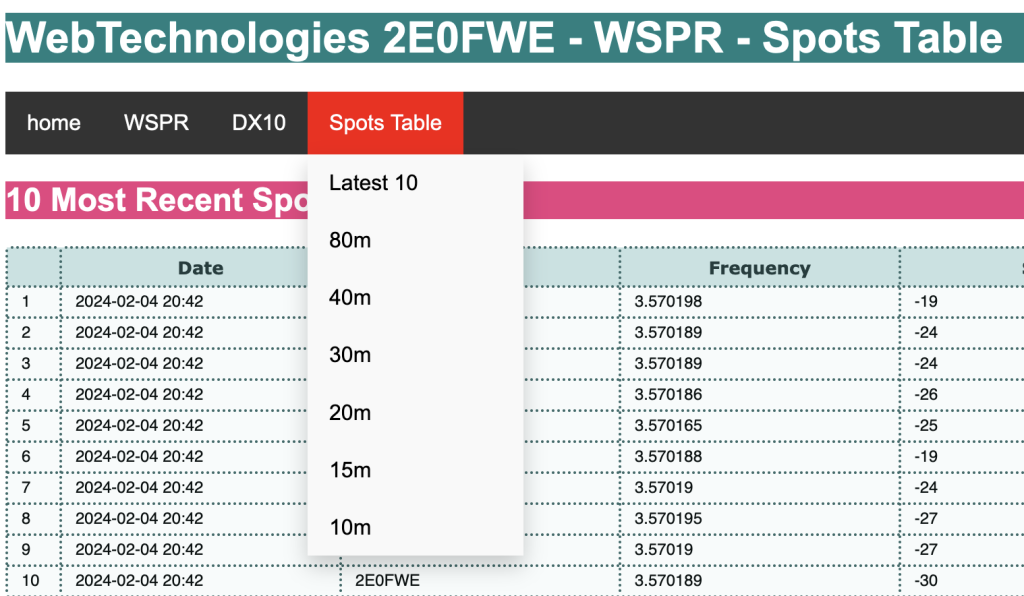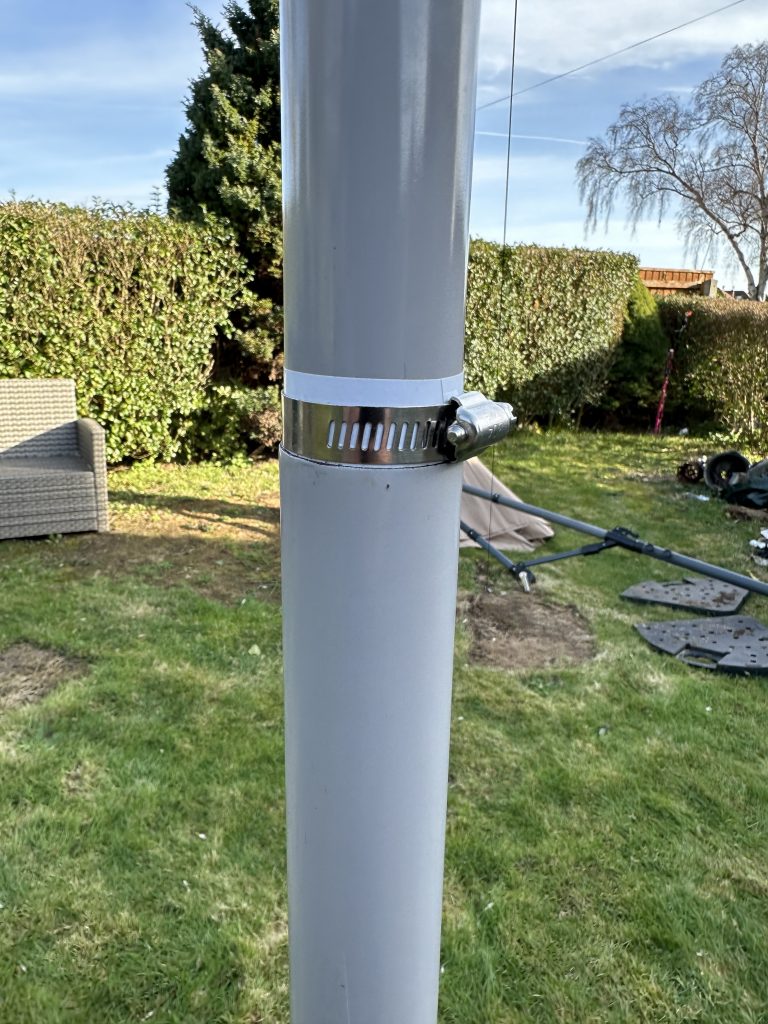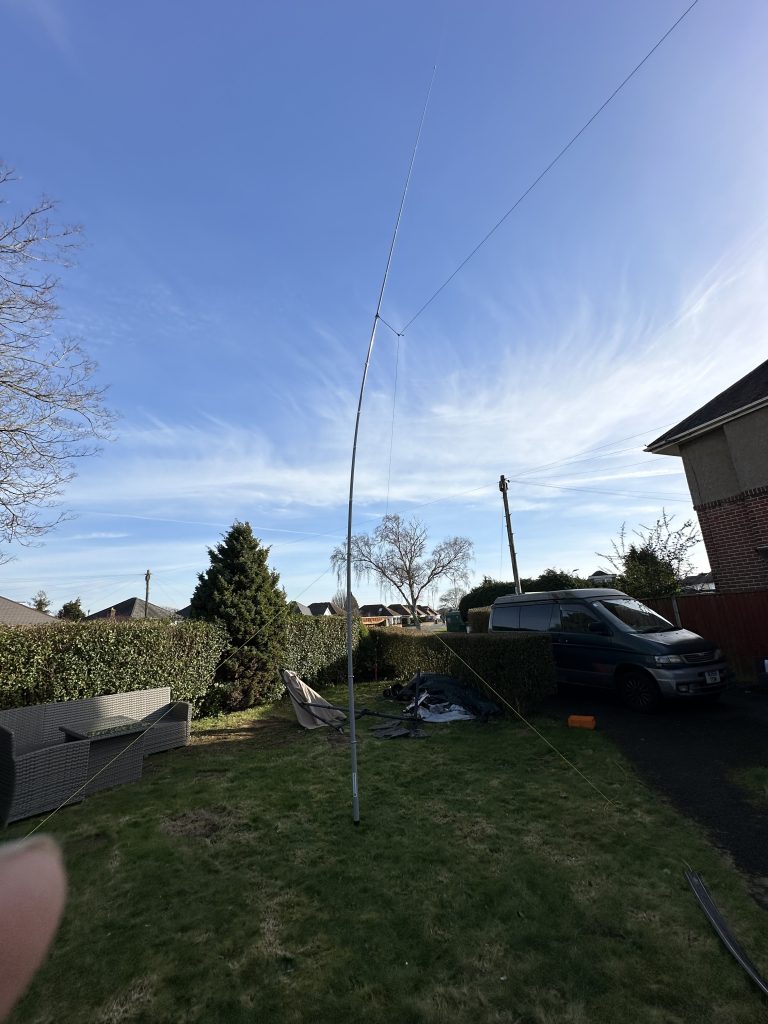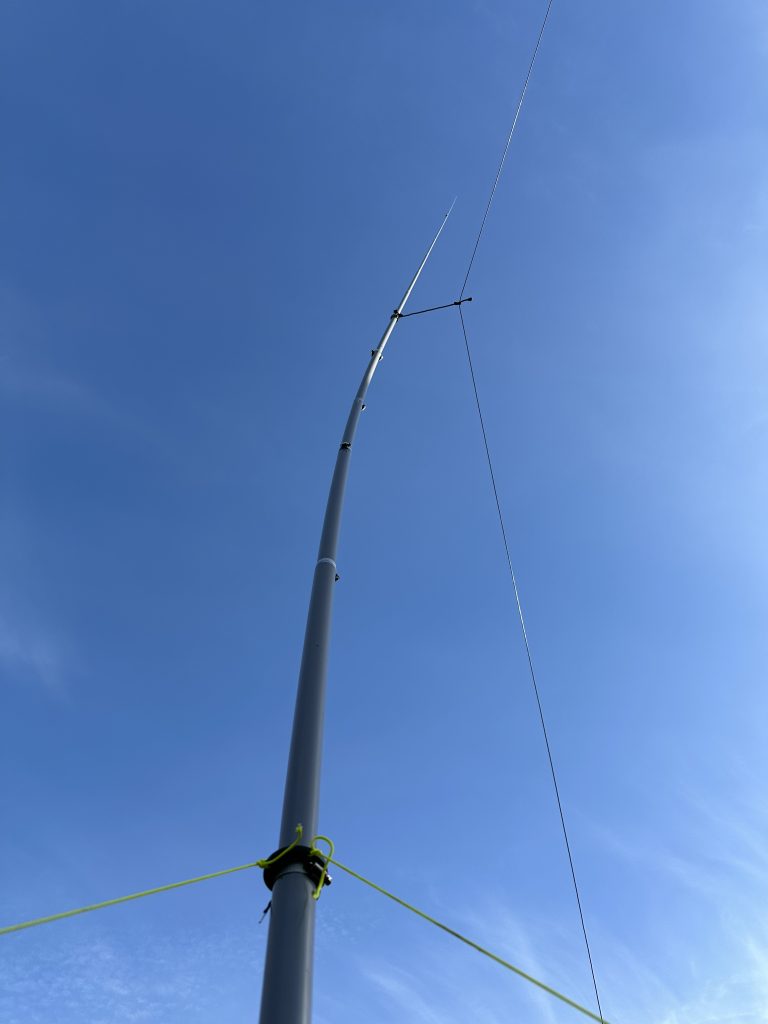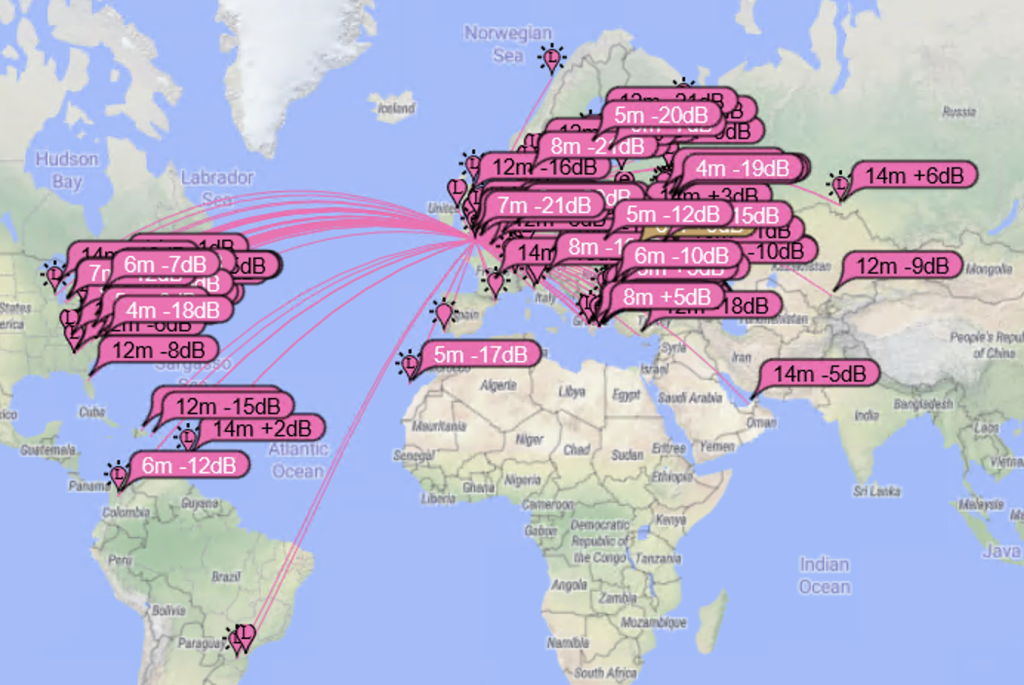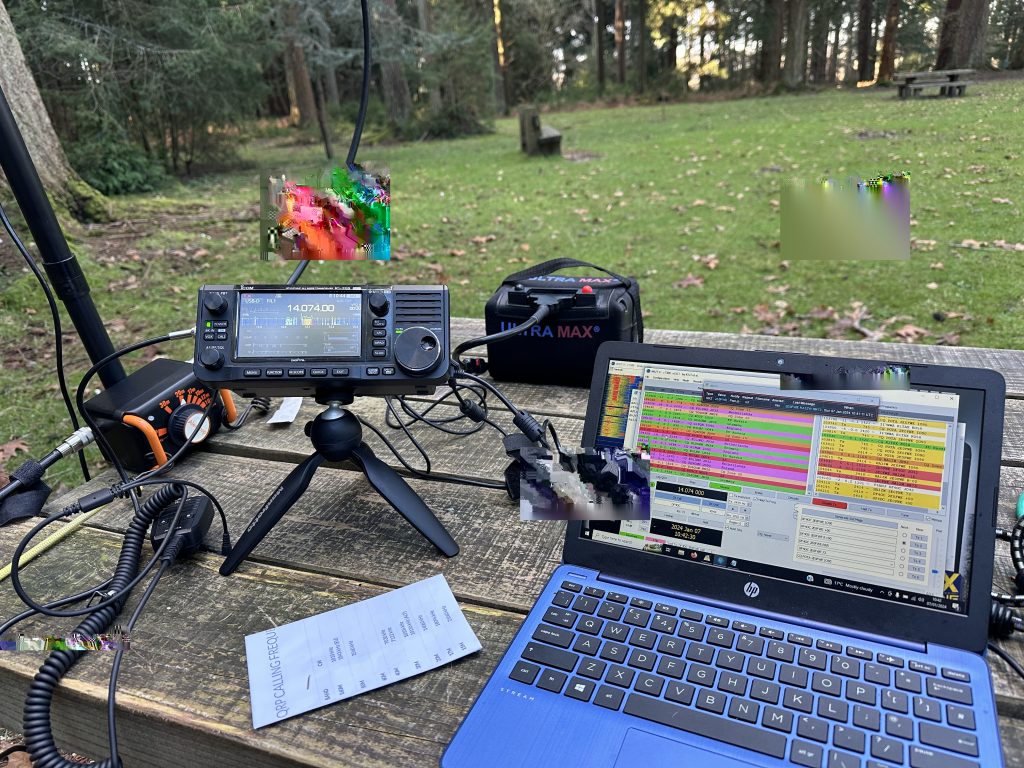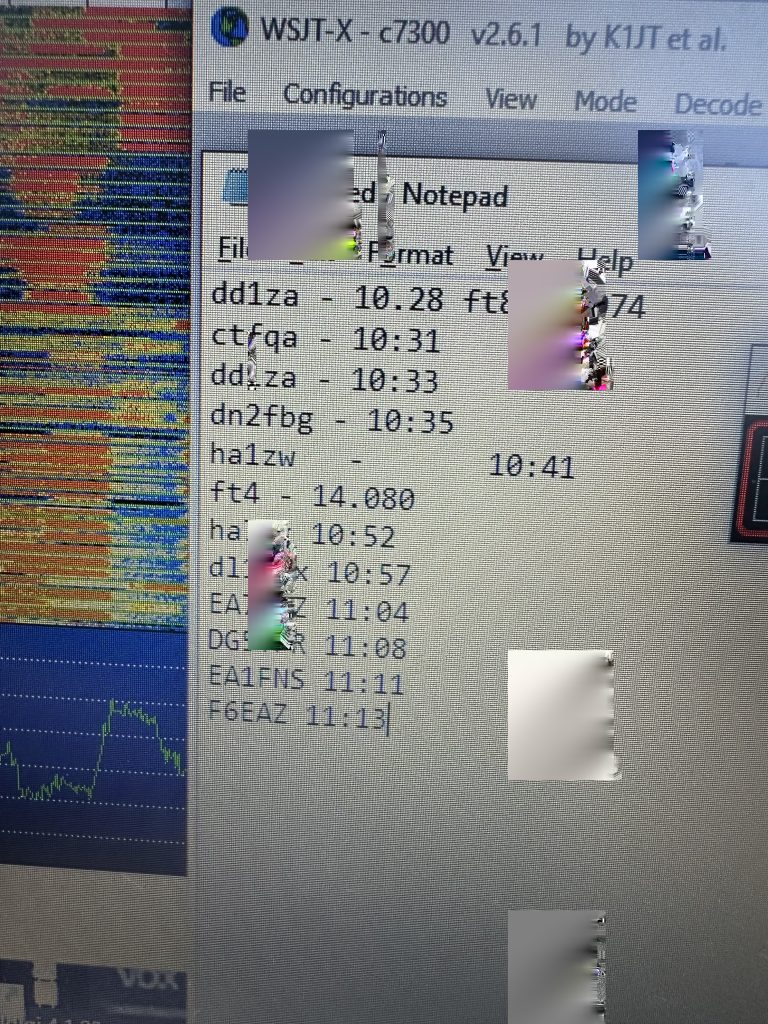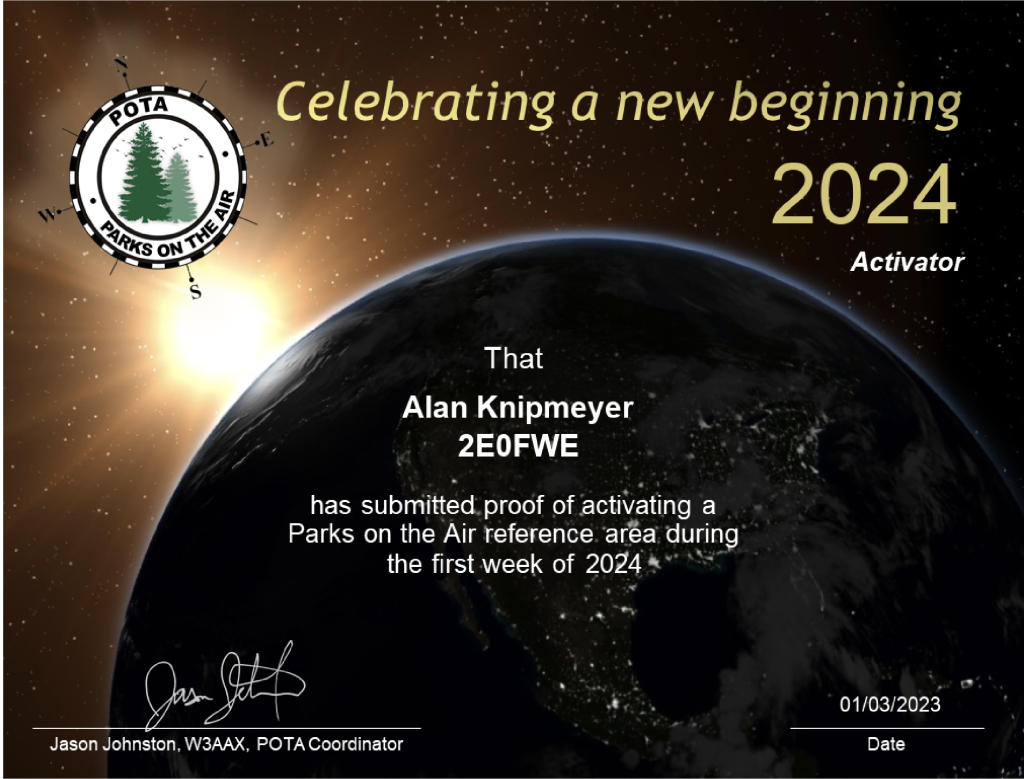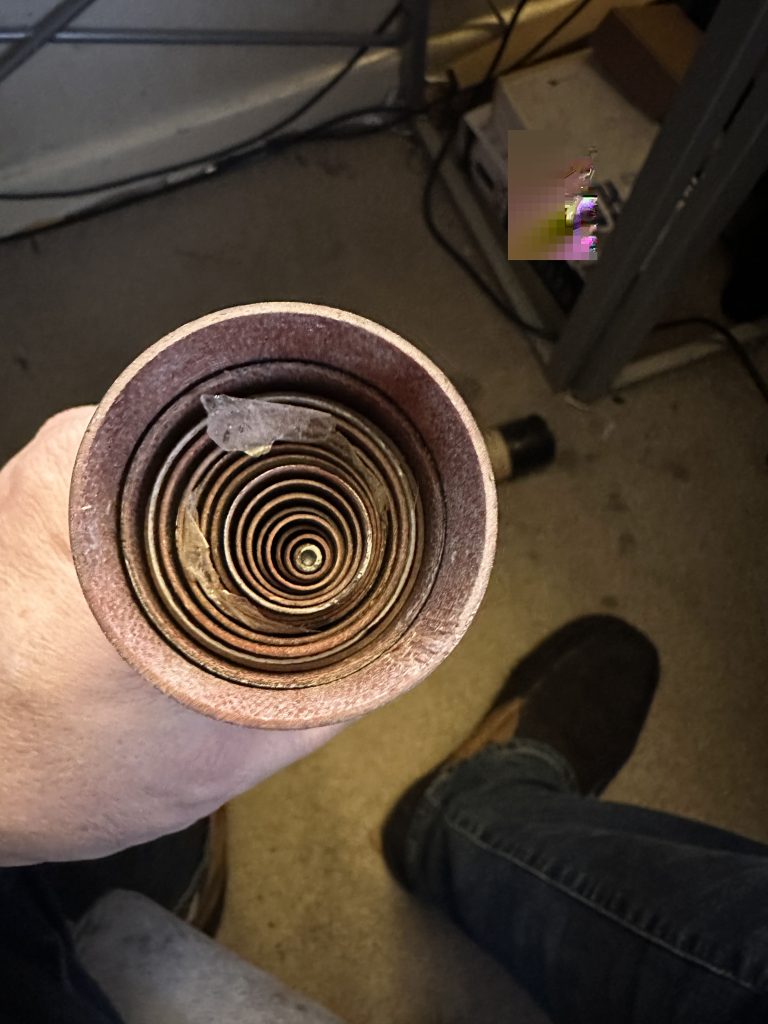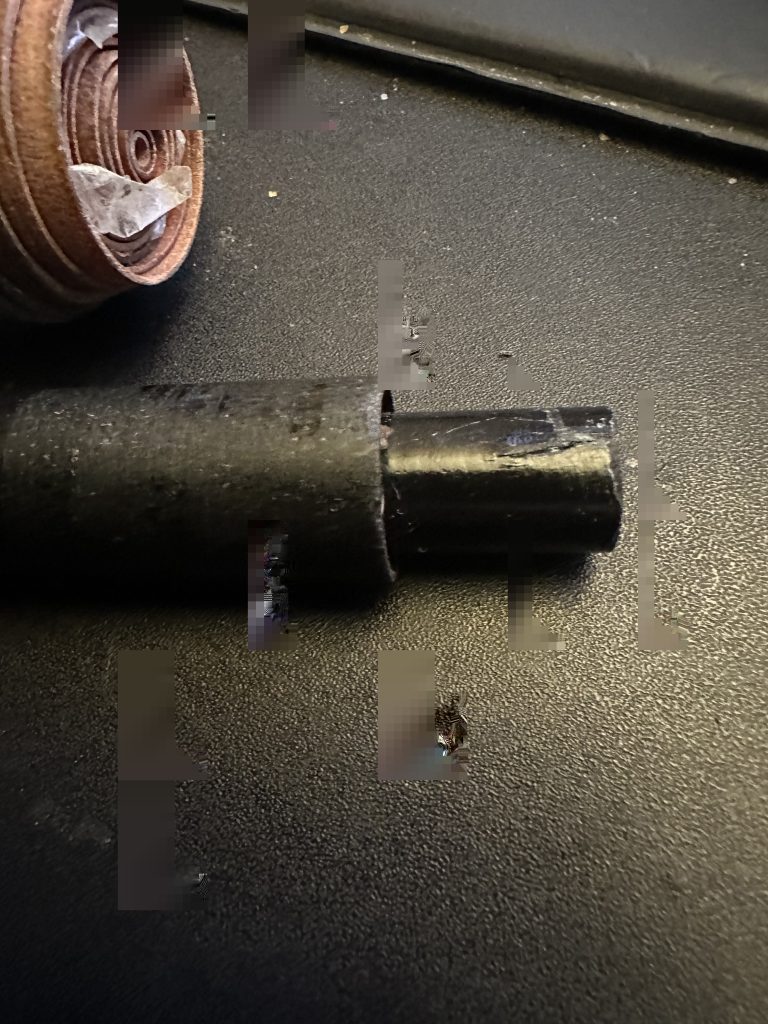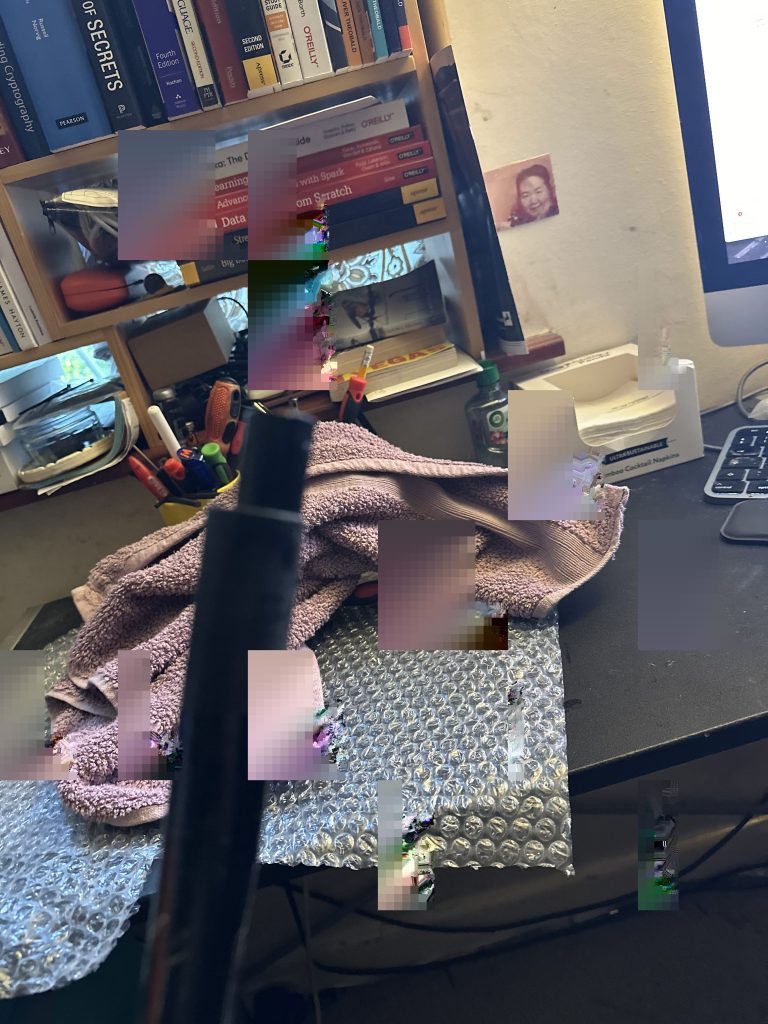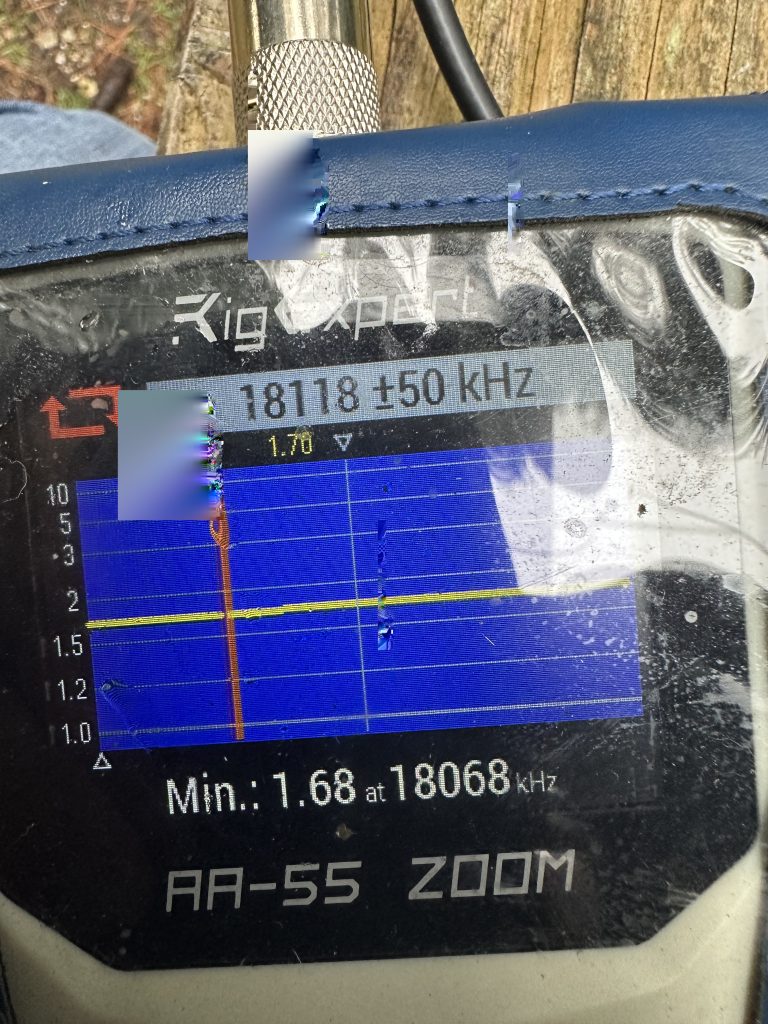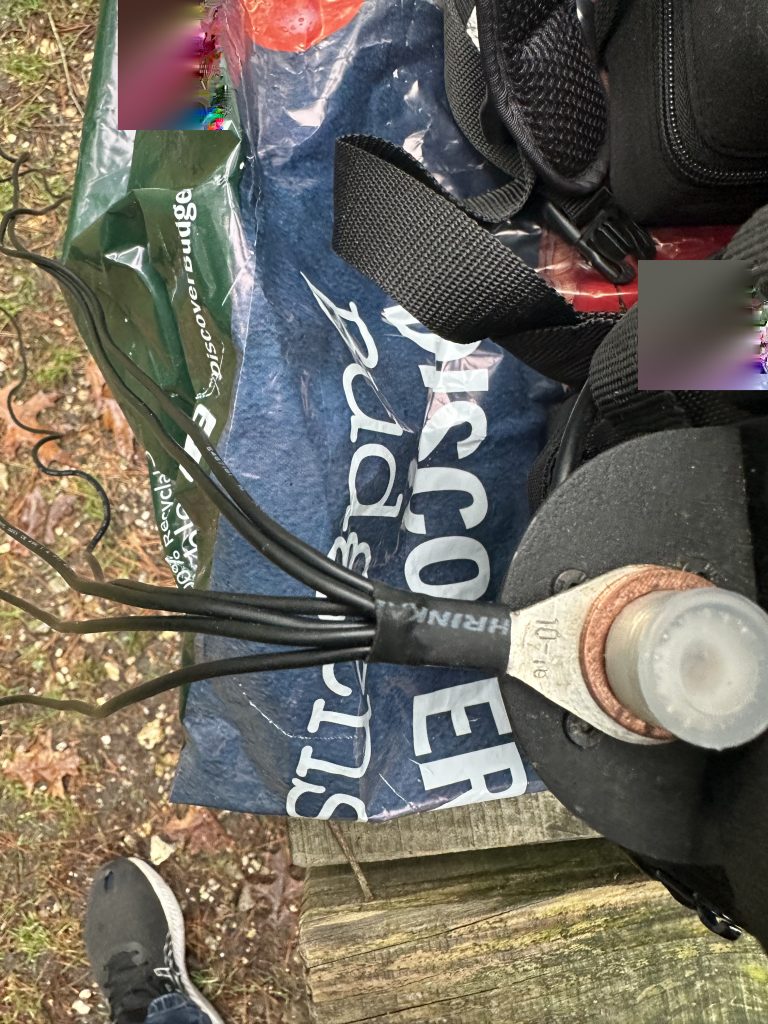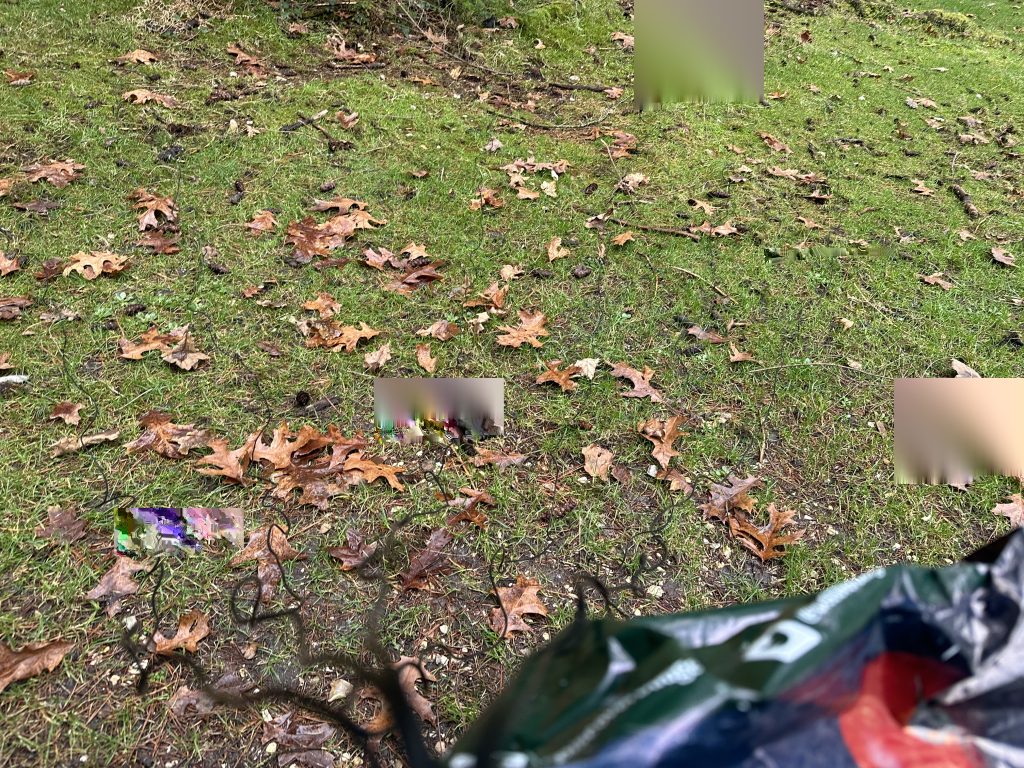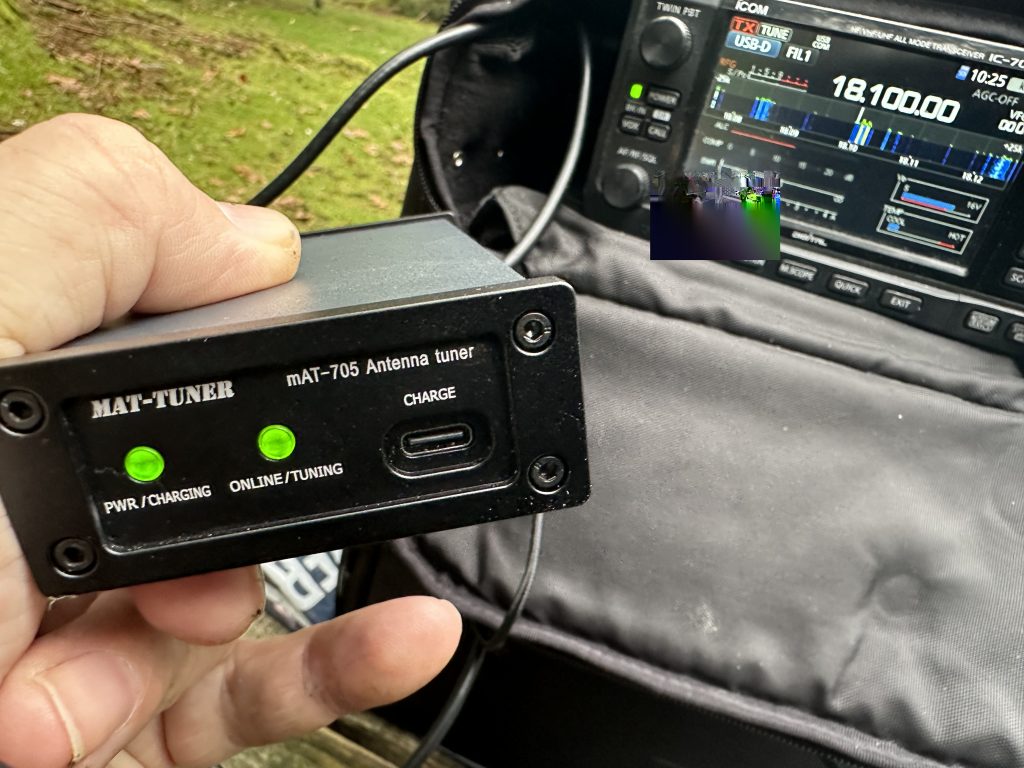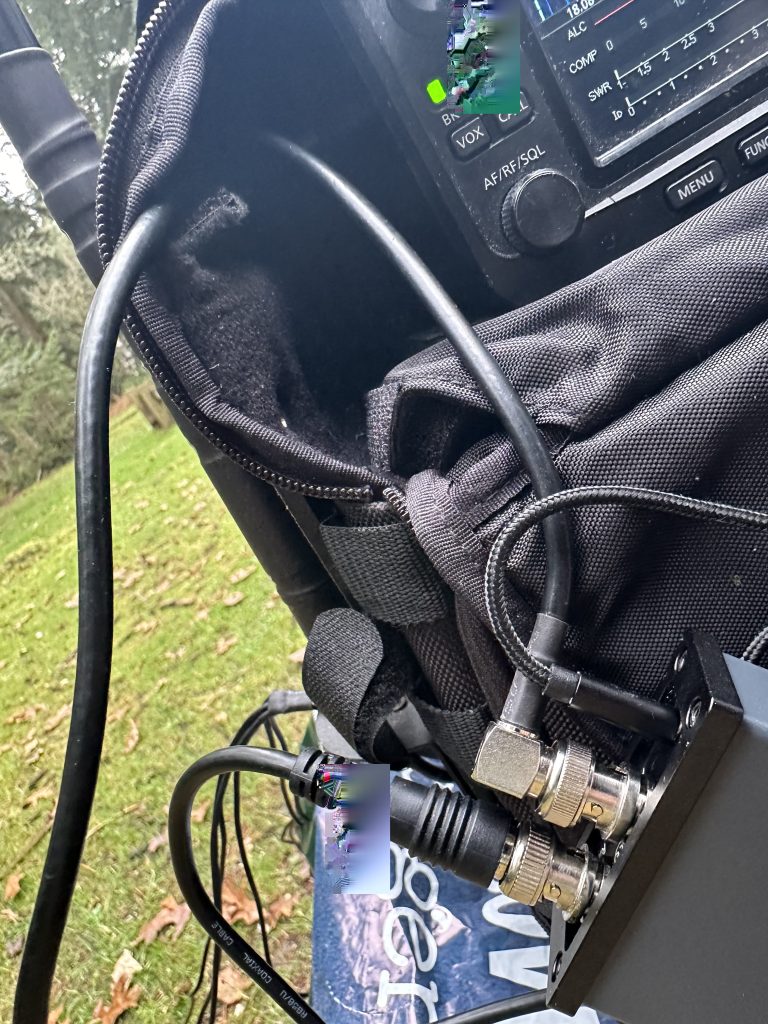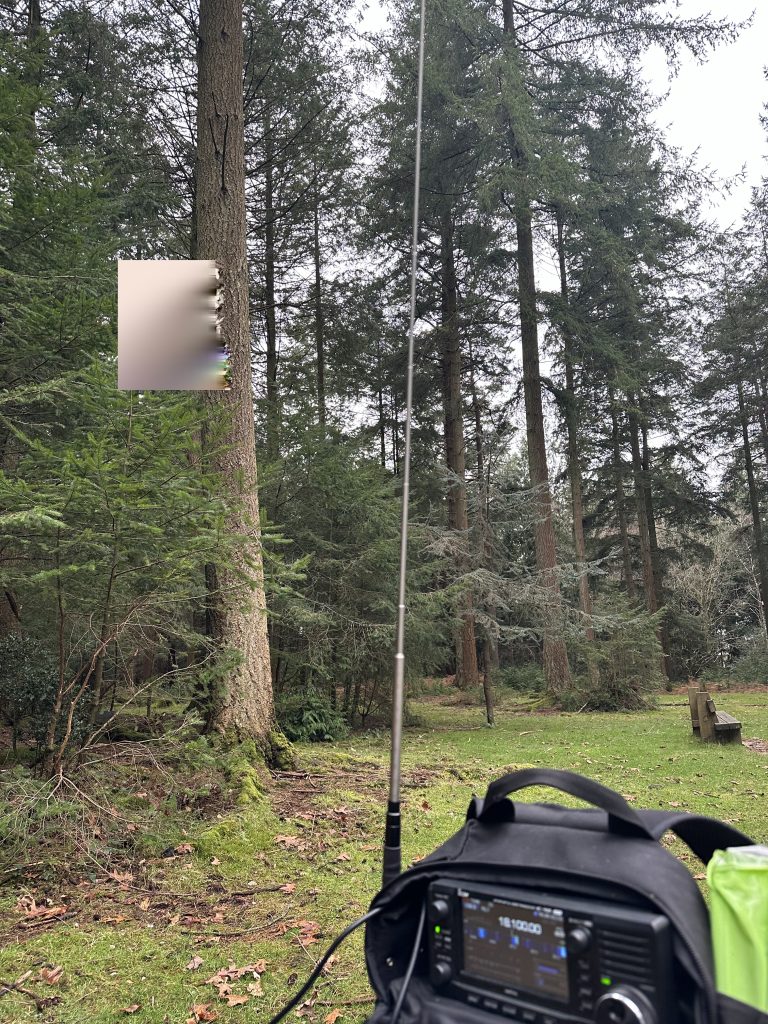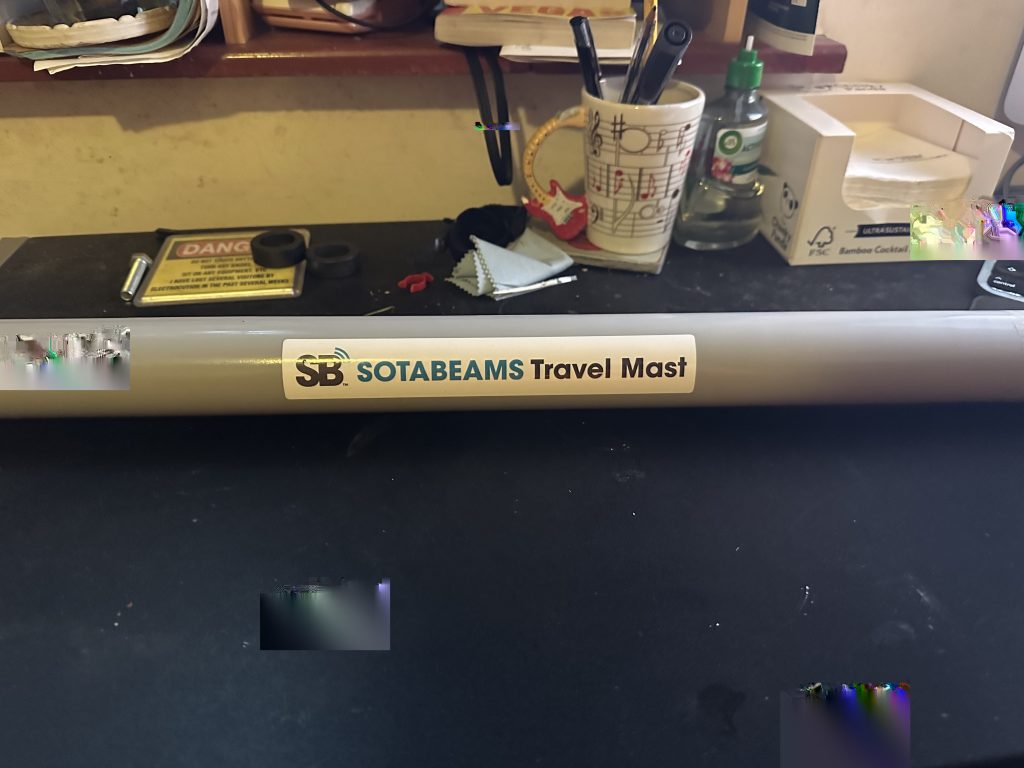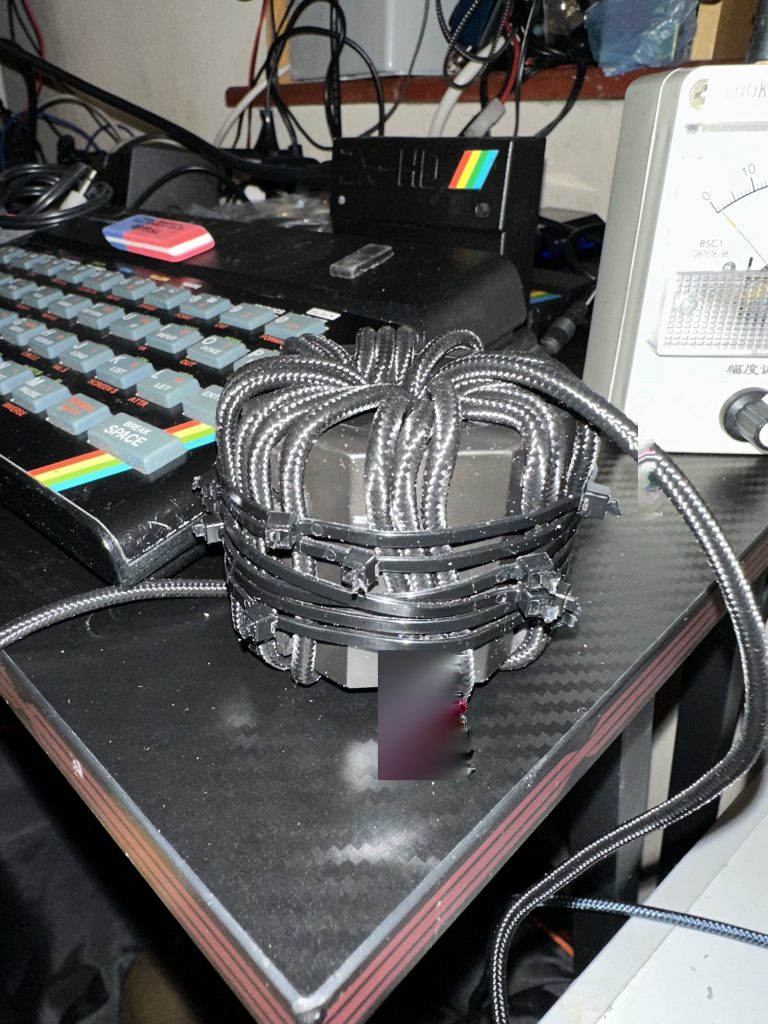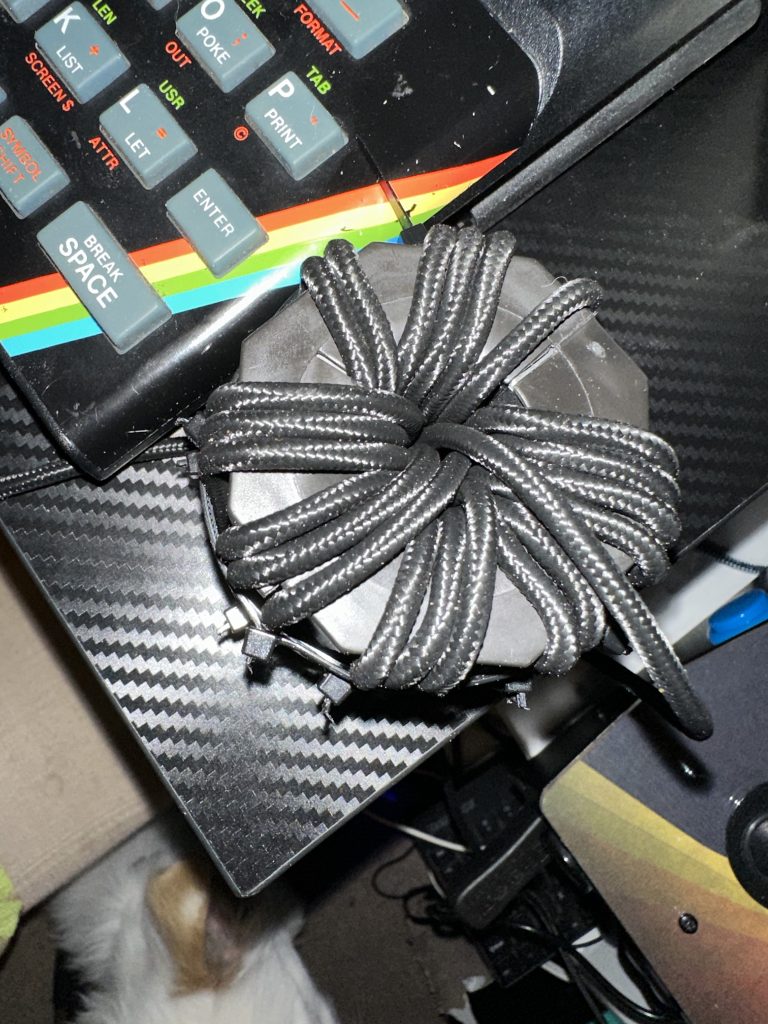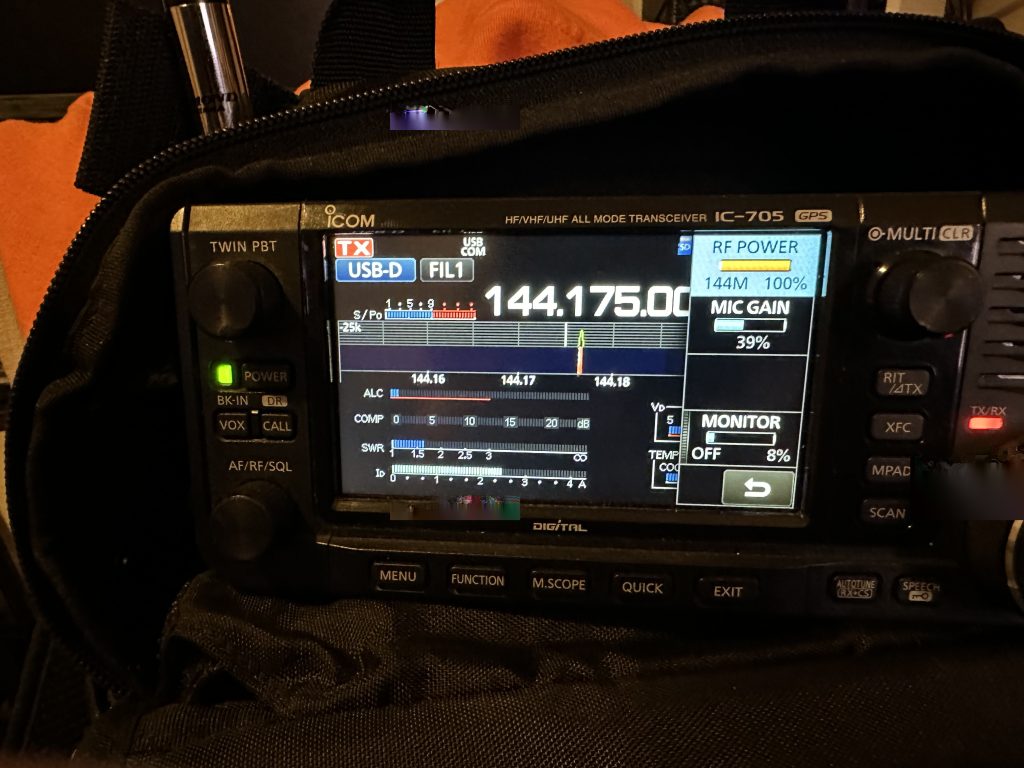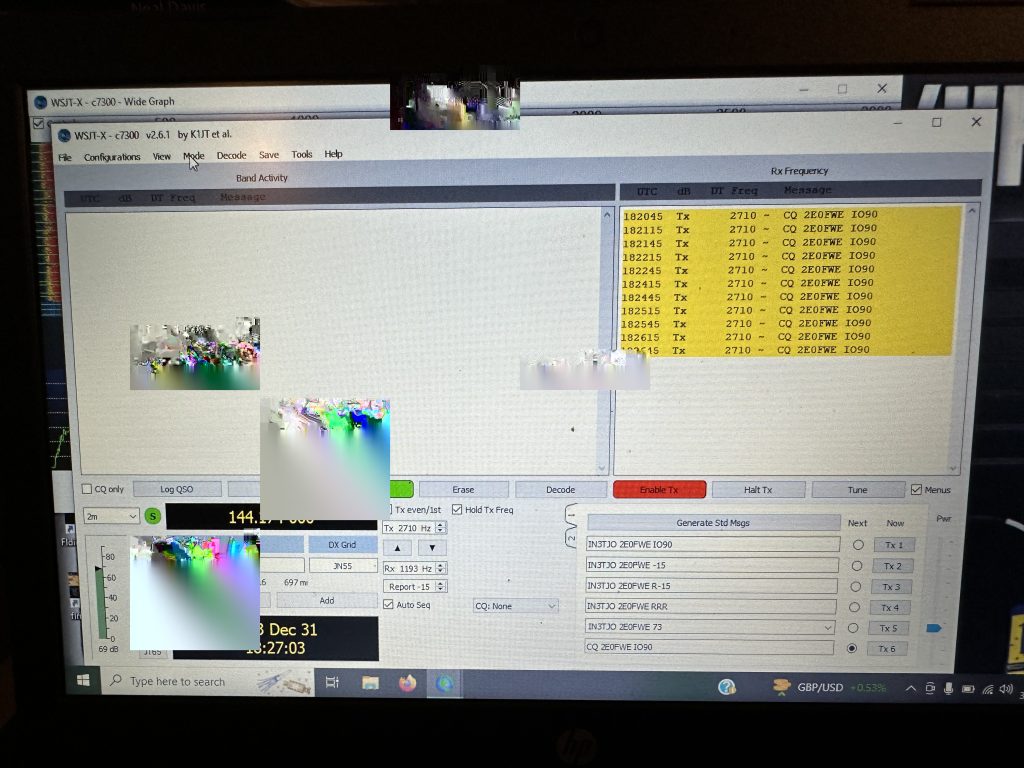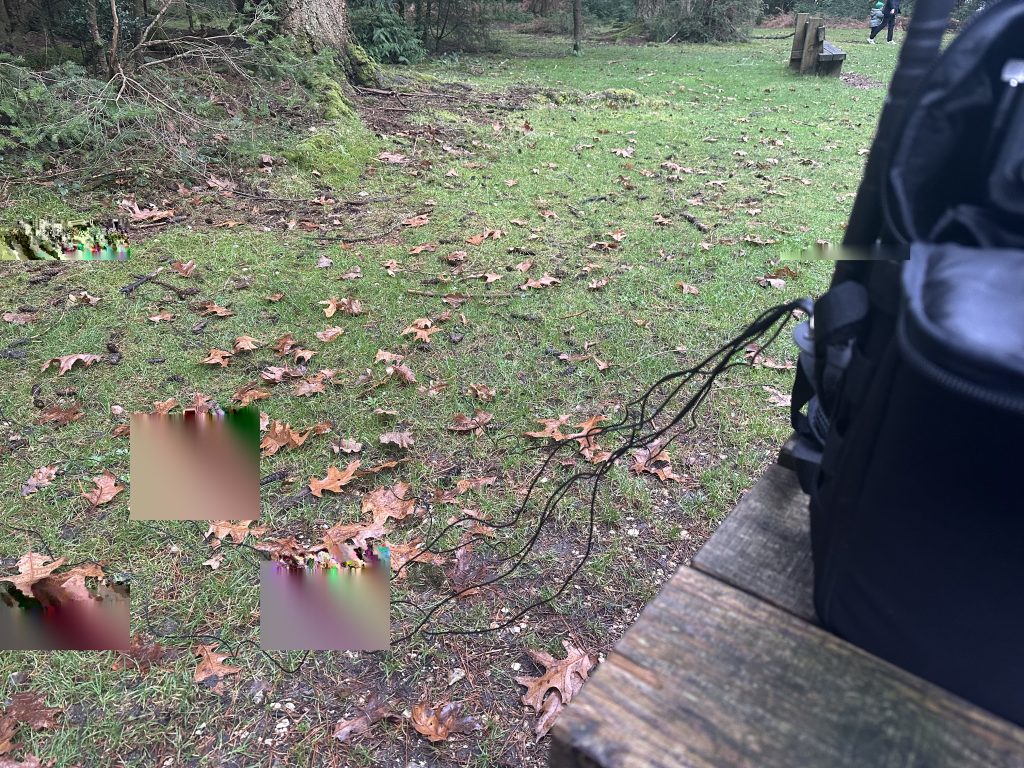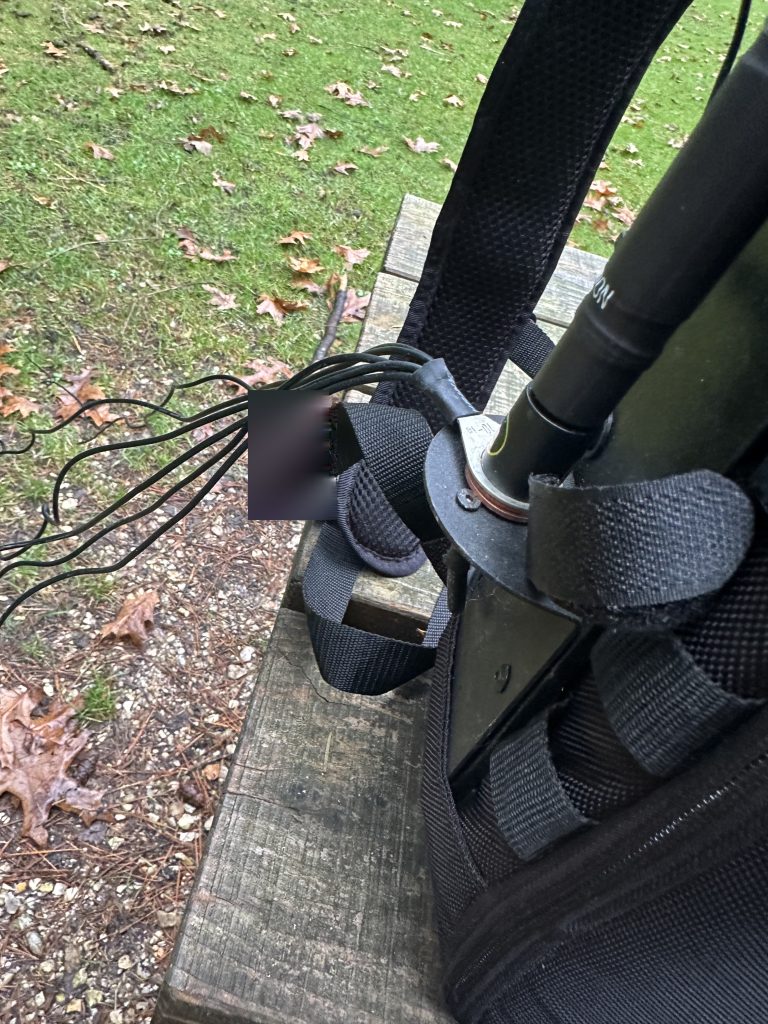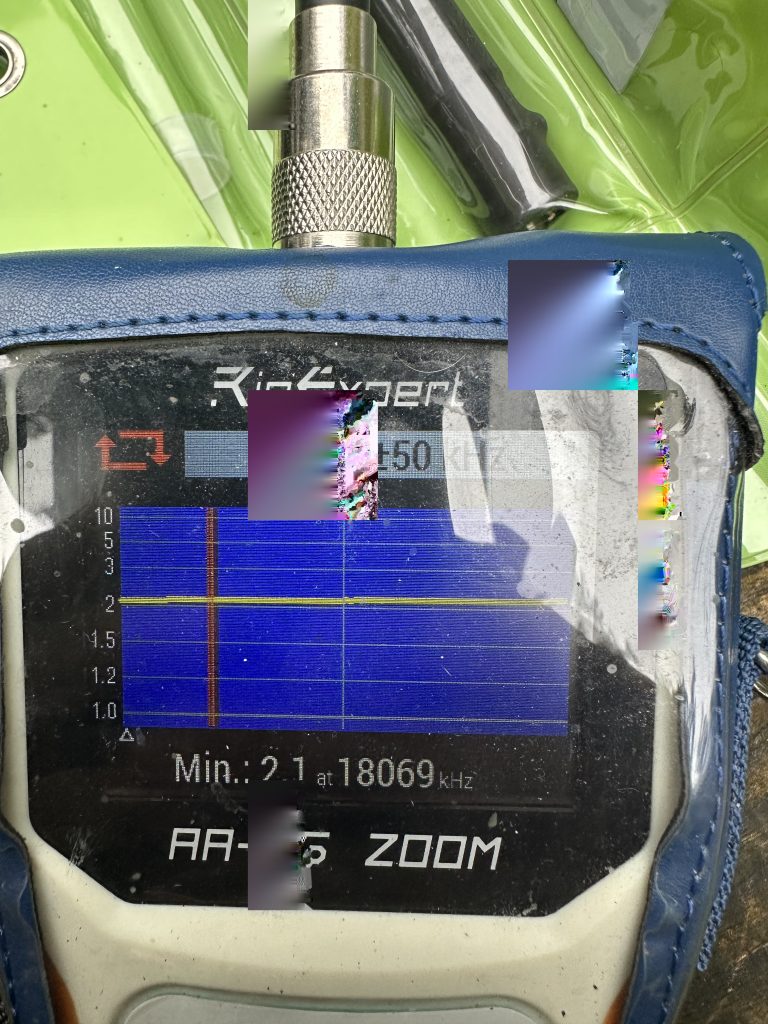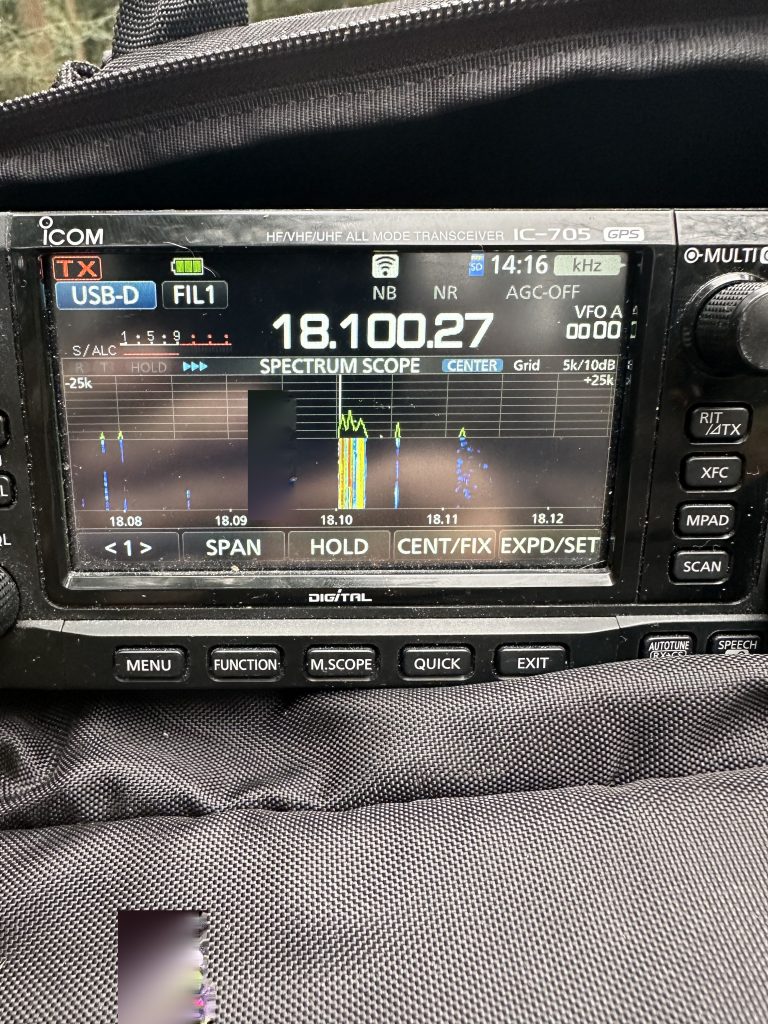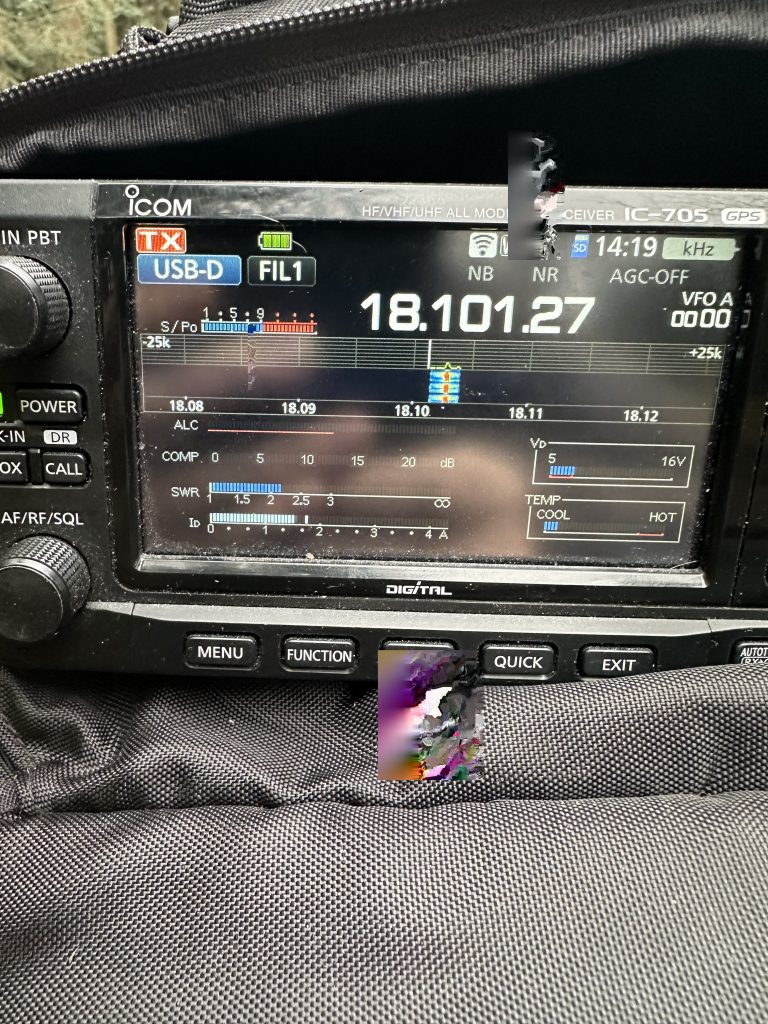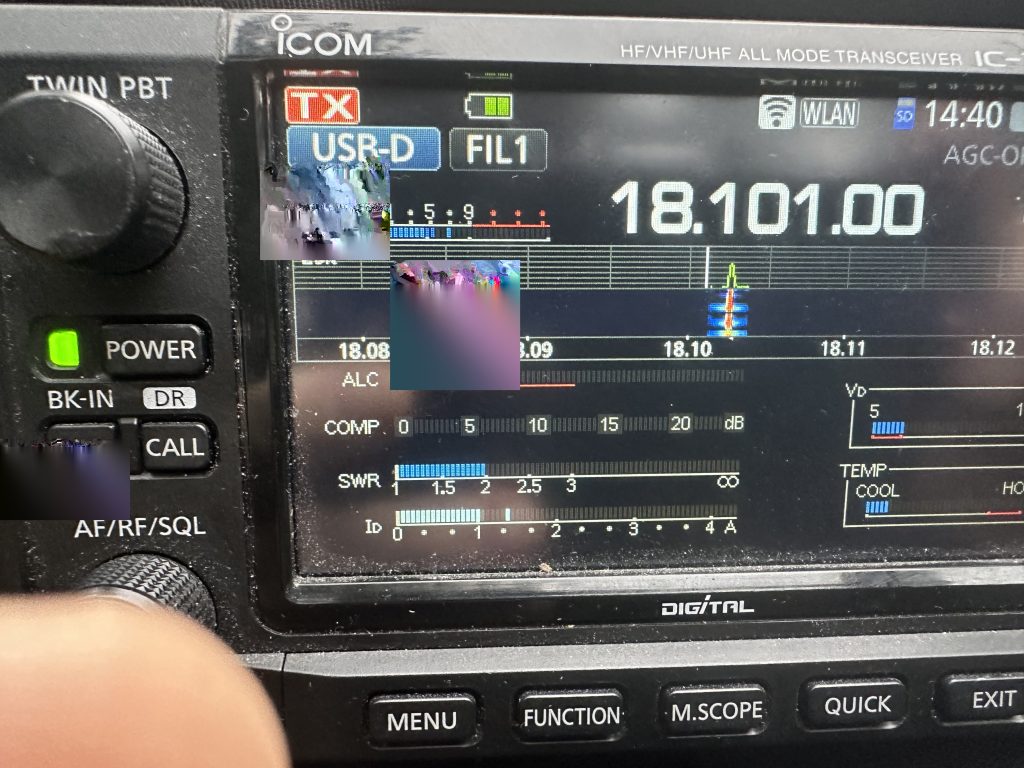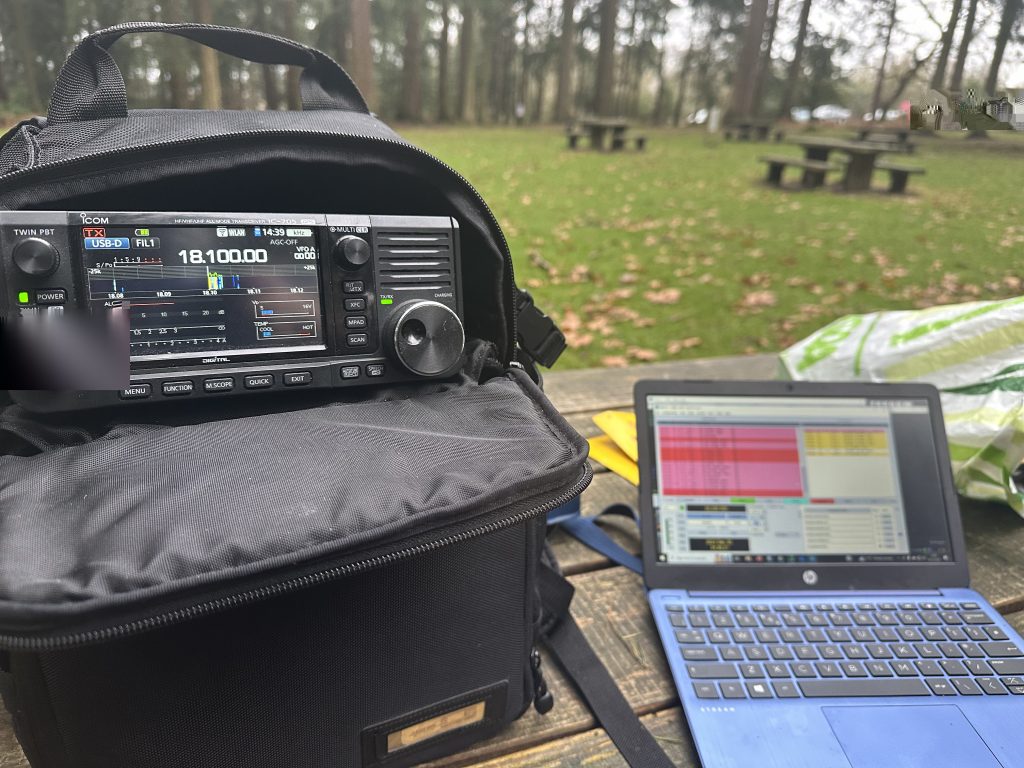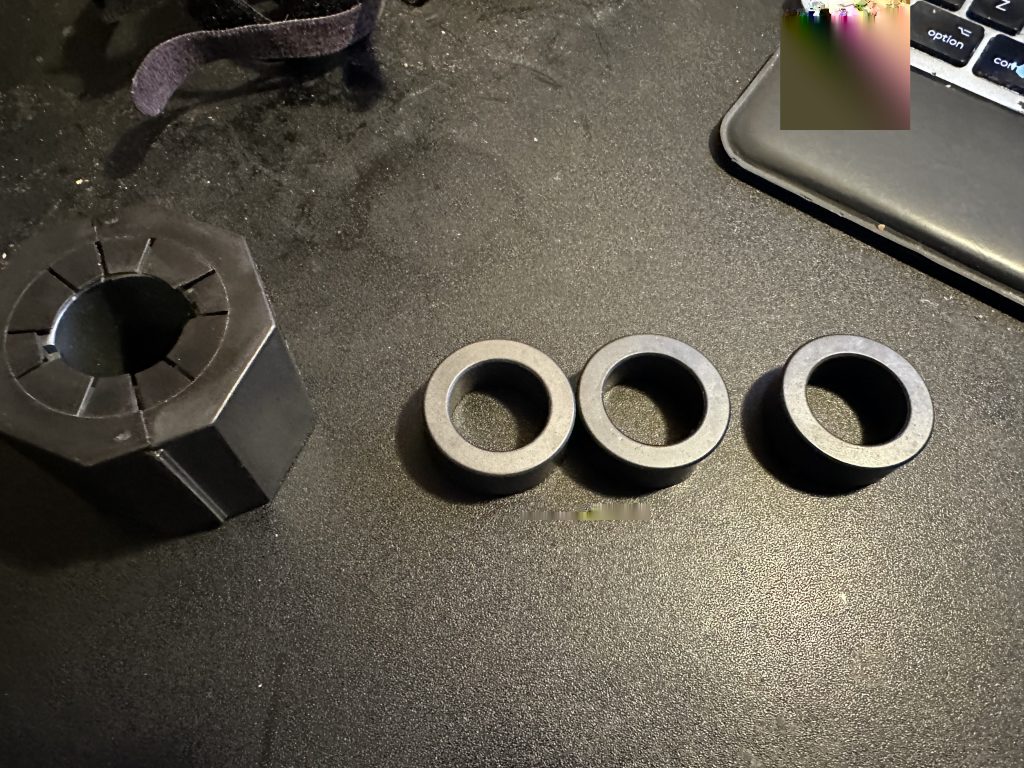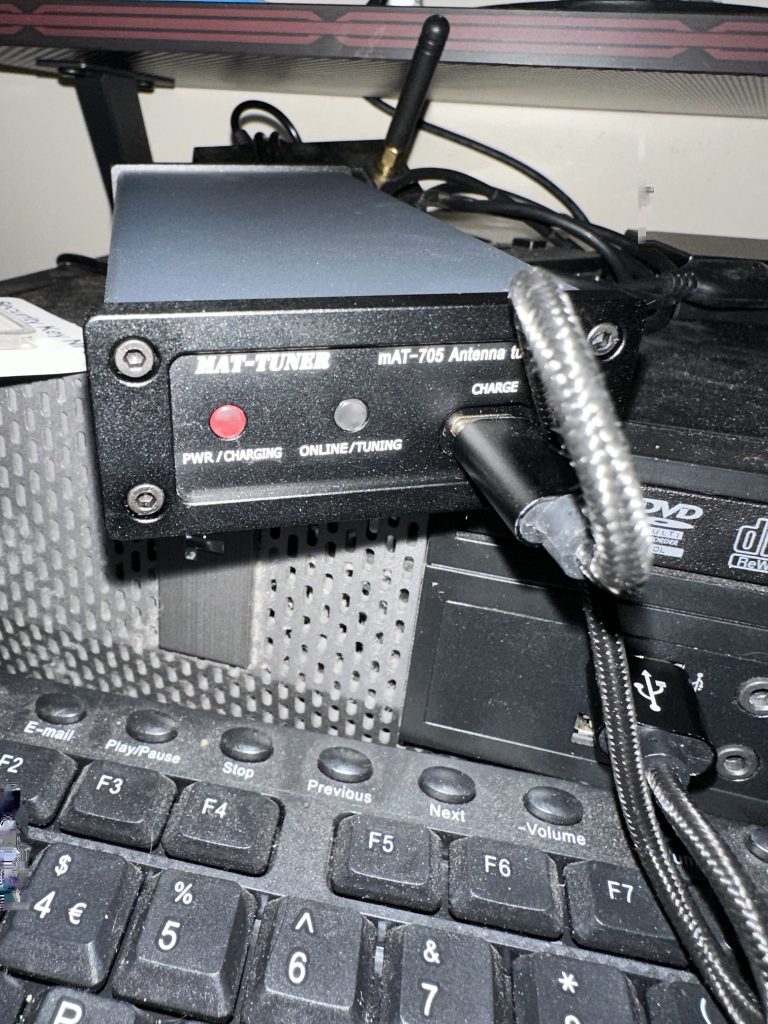Having worked on antenna projects at home and with good weather the urge to get out and get on the air was strong ! This time it was an morning outing to the New Forest and Bolderwood, which was unsuprisingly busy with familes, dog walkers and folk enjoy the lovely surroundings of Bolderwood.
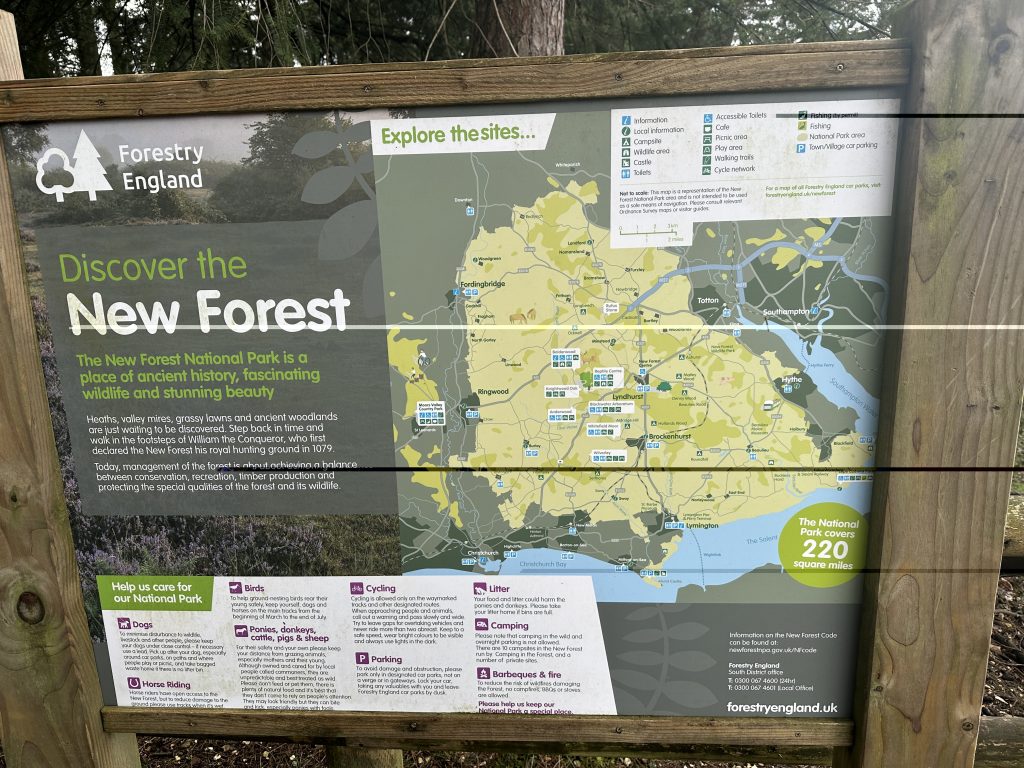
I setup the 705 and Alexloop, although struggled with getting the loop on securely this time out, just figured it was a case of over familairity – sometimes it just goes ‘on’ but this time it was being a right rascal ! Still, i was on the air quick with the radio setup. I jumped on 20m and started with FT8. No sooner had I self spotted the flow of contacts coming in was amazing !
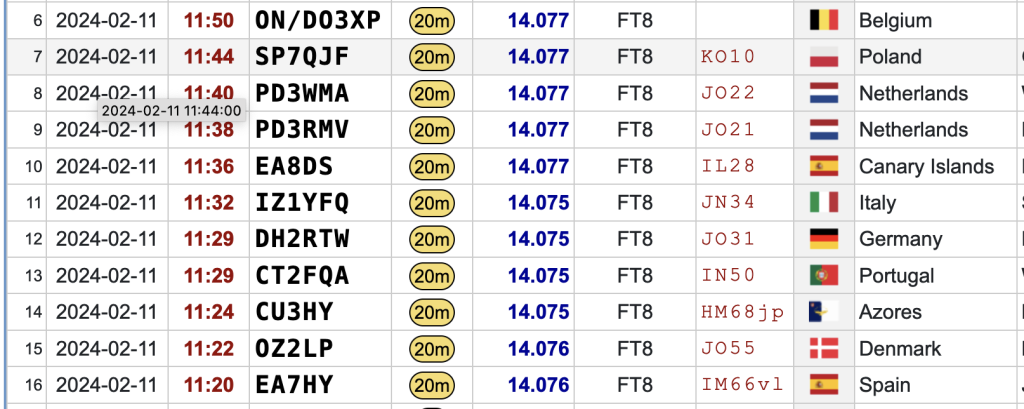
The FT8 contacts came in from all over Europe, I was making it into the west coast of the states, but no QSO’s that far today unlike last weeks greyline activation.

With the 10 contacts needed to activate the park and enough battery for both laptop and radio I tried SSTV, but it was very busy today. I found it slightly annoying that some people seem to serial transmit and dont leave a gap for a response. At least two times there was the same person calling CQ without leaving a gap and just retransmitting, I did however manage to capture a screenshot thanks to the cool CQ SSTV website which pulls in reception of SSTV sites.
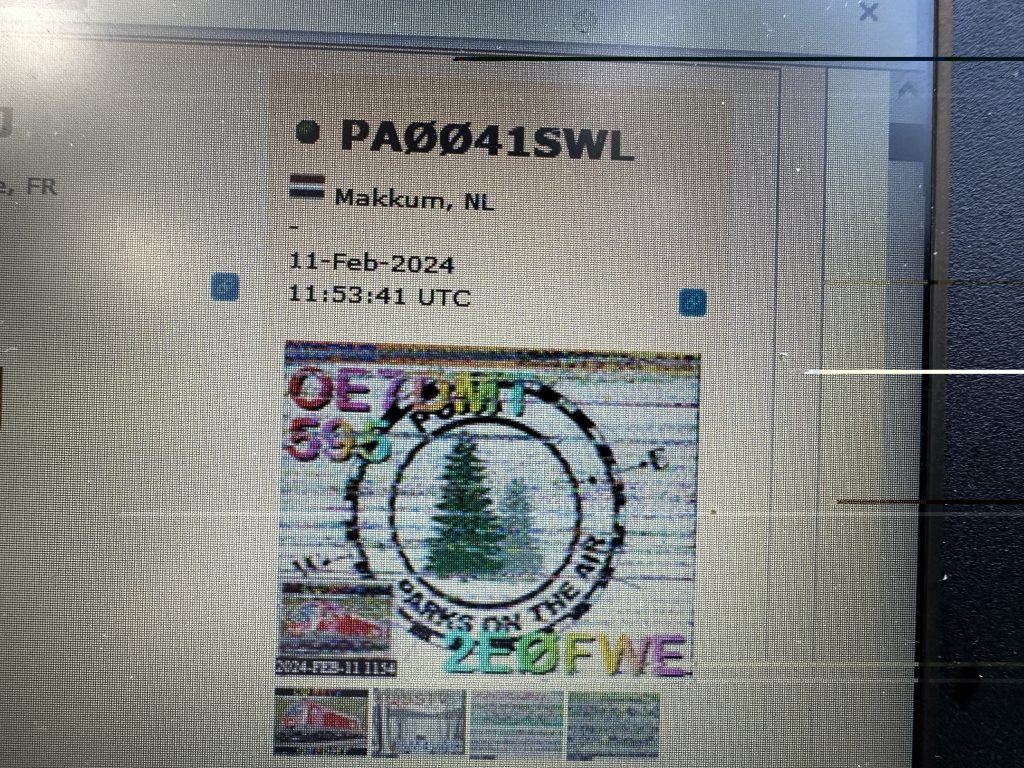
I tried a couple of times, but the QRM from interference on the band, as seen by the horiziontal lines on the image, was just getting stronger. I jumped over to 17M being a non contest band and generally good for QRP operations.
My first attempt on the QRP CoA resulted in a partial call sign and no signal report, so I moved further up the band to find a gap. I wasnt to be disappointed and made 3 great telephony contacts on 10W, it was a great experience mix up the PoTA activation with SSB phone contacts, with good reports.

It was great that two of the phone contacts where made my PoTA hunters, showing that the app really worked well. Getting pulled out using low power is a challenge, but great when those signal repots come and the QSO’s are more than the FT8 signal report/ACK. A fine example of this was the SO with ‘Andy’ and DM5MU, who was happy to chat about his amazing Yagi which was running very low power but booming into the new forest with 59+10db! My signal reports was just as good with 5/9!
With all the fun and excitment of making rapid contacts on FT8 and Phone contacts on 17M I felt i had a great time on the radio, I was able to at least get a SSTV decode and enjoyed doing PoTA – one award is the ‘repeat offender’ which is 25 activations from the same location. As the new forest is quite big, its possible to goto other parts and use the same PoTA reference, so something I’m most deifneatly lookin at doing as the year goes on !

A big thanks to the PoTA huters, esp those who work me whilst I’m only running 10W and patiently give me their callsign and signal reports, it really is a great time out !
Until next time 73 ! 2E0FWE

